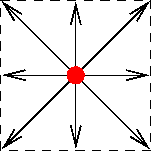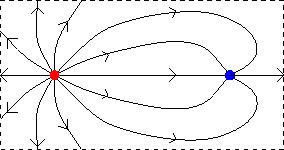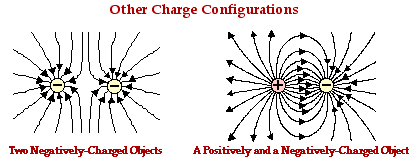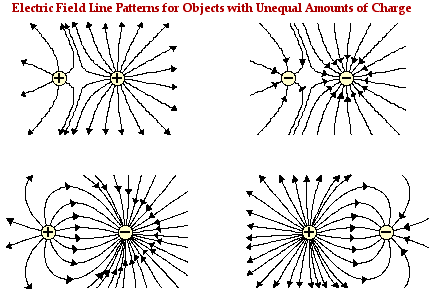Electric field lines
Electric field lines provide a means of viewing the electric field but are not quantitative. Since the electric field is a vector, electric field lines have arrows, showing the direction of the electric field. As an example,we show the electric field lines of a point charge and of a positive and negative charge.


The following rules apply to electric field lines:
- Lines begin and end only at charges, beginning at + charges, disappearing at - charges.
- Lines are closer together where the field is stronger.
- Large charges have more field lines beginning/terminating at the charges.
- Electric Field lines never cross.
For instance, the positive charge is stronger than the negative charge on the upper right diagram, since there are more lines originating from the positive charge and the lines from the negative charge are more strongly bent than the lines from the positive charge.
For complete set of notes: http://www.pa.msu.edu/courses/1997spring/PHY232/lectures/

Rules or Laws for Electric Field Lines
- Electric field lines always start and point away from any positive charge (+q) making up the field.
- The number of field lines eminating from a charge is proportional to the magnitude of the charge.
- The number of field lines per unit area (volume) passing at right angles through a surface is proportional to the strenght of the electric field.
- Field lines will flow from a positive charge to a negative charge. The number of lines and concentration of lines will depend of charge magnitude and closeness of the charges.
- Like charges will show a replusion of field lines.
Here are some diagrams to show these concepts


Field maps around charges with concentric equipotential lines are at right angles to the field lines. Equipotential lines are lines of similiar potential. They never cross or intersect each other. Their shapes will depend upon any other charge or charges and the magnitudes of these charges as shown in the diagrams above..






